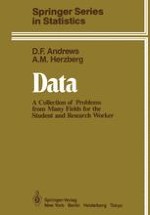1985 | OriginalPaper | Buchkapitel
Visual Pattern Recognition
verfasst von : D. F. Andrews, A. M. Herzberg
Erschienen in: Data
Verlag: Springer New York
Enthalten in: Professional Book Archive
Aktivieren Sie unsere intelligente Suche, um passende Fachinhalte oder Patente zu finden.
Wählen Sie Textabschnitte aus um mit Künstlicher Intelligenz passenden Patente zu finden. powered by
Markieren Sie Textabschnitte, um KI-gestützt weitere passende Inhalte zu finden. powered by
One of the major problems in the understanding of visual perception concerns how spatially structured stimuli are visually encoded and processed by the nervous system. Over the last decade two main theories of form perception and pattern recognition have emerged. The one supposes that spatially structured stimuli are represented internally by the visual system as unstructured, approximately point-for-point ‘images’ of the stimulus. Judgements on the similarity of stimuli are made by subjecting these internal pattern representations to families of internal transformations that serve to bring the representations as closely as possible into coincidence. The amount of overlap between the transformed representations determines the judged similarity of the patterns. The other theory supposes that spatially structured stimuli are internally represented in an essentially symbolic fashion, listing local features of the stimulus pattern, for example, blobs, edges and corners, and the spatial relations that exist between these local features, for example, left of, joined to and far from. Judgements on the similarity of stimuli are achieved by an internal matching of their symbolic descriptions; see, for example, Barlow, Narasimhan and Rosenfeld (1972), Sutherland (1973) and Kahn and Foster (1981).
